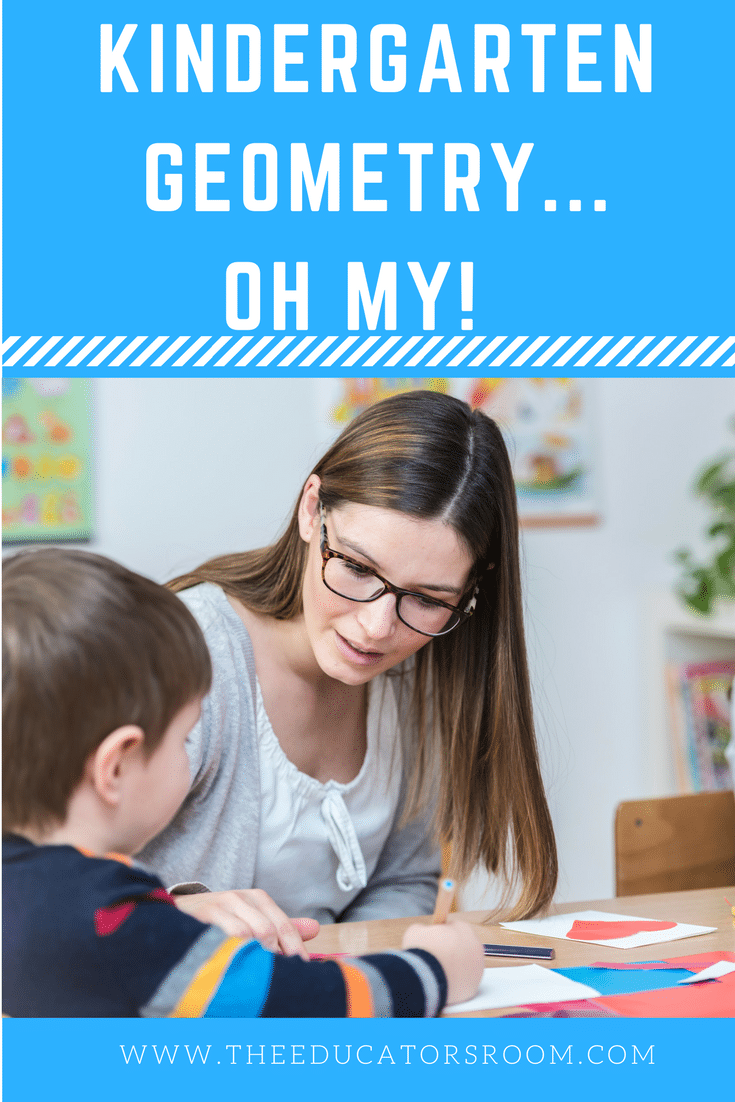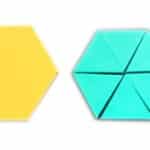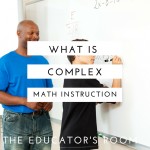Long before the Common Core School Standards (CCSS) were written, the National Council of Teachers of Mathematics (NCTM) authored a set of standards for K-12 math. The standards were revised several times and what stands today has many things in common with CCSS. Instead of teaching certain topics in certain grades – like geometry – the standards have broken concepts down to what is appropriate to be introduced over a several grade period of time. This is why you are seeing geometry being taught in kindergarten.
Many parents are unsure of how they can help their young children with some of these topics. It isn’t as hard as you may think and it doesn’t take any special training. By the time you finish reading this article you will know what geometric concepts children in kindergarten will learn, a children’s book you can read to/with your child on the subject, online practice games to use, worksheets you can print out, and real world connections that you and your child can make about geometry.
During their time in kindergarten children should be able to grasp the following concepts:
1. Describe objects in the environment using names of shapes, and describe the relative positions of these objects using terms such as above, below, beside, in front of, behind, and next to.
2. Correctly name shapes regardless of their orientations or overall size.
3. Identify shapes as two-dimensional (lying in a plane, “flat”) or three-dimensional (“solid”).
4. Analyze and compare two- and three-dimensional shapes, in different sizes and orientations, using informal language to describe their similarities, differences, parts (e.g., the number of sides and vertices/”corners”) and other attributes (e.g., having sides of equal length).
5. Model shapes in the world by building shapes from components (e.g., sticks and clay balls) and drawing shapes.
6. Compose simple shapes to form larger shapes. For example, “Can you join these two triangles with full sides touching to make a rectangle?”
Although this may seem like a major task it really isn’t as bad as it seems. Common Core math was written in formal mathematical terms which most parents and elementary teachers have not seen for years. For example, it is really not age appropriate to expect a kindergartener to know what a vertex is so just use a corner when working with your child.
Let me translate what has been written in these standards for you:
1. Children who know shapes (circle, square, rectangle, triangle, hexagon, and octagon) can point them out to you when you take a walk. Windows and doors are rectangles. Some windows are squares. A slice of pizza looks like a triangle. A stop sign is an octagon. Metal nuts are hexagons. When a child finds a shape ask him to tell you what is next to or above the object.
[bctt tweet=”Children who know shapes (circle, square, rectangle, triangle, hexagon, and octagon) can point them out to you when you take a walk” username=””]
2. Use pattern blocks or cut out a variety of shapes (in different sizes). Place the shapes in different positions and ask the child to name them.
3. Two-dimensional objects can lay flat on a table. Three-dimensional objects stand up above the surface of a table. (Examples of 2 D shapes are circle, square, triangle. Examples of 3D shapes are sphere, cube, and pyramid). Place 2 D and 3 D objects on a table and have the child separate them into the proper group.
4. When a child looks at a square, she should be able to count the 4 sides and 4 corners. She should also know that the sides are all the same length. When looking at a pyramid she should know what the shape of the base is and that the 4 sides are triangles. She should also know that there are 5 corners (vertices).
5. Modeling shapes can be fun if you use straws for the edges and either clay or gumdrops for the corners. You can make both 2 D and 3 D shapes this way.
6. Combining shapes is really easy if you have pattern blocks. Two triangles can be put together to make a square. Let the child experiment to see if there are any other combinations that produce another shape.
Here are some additional ways to help your kindergartner learn geometry and have fun. These websites have free activities for learning geometry. Some even have spoken information as the child plays a game:
Chicken Blastoff – Combining shapes.
Turtle Diary – Recognizing 3D shapes from 2D shapes. Spoken information about shapes is given click after each correct choice.
Turtle Diary – Find the Shapes – The child counts the number of times a spoken shape is in the picture.
Fun Stuff to Do – Printable pages for recognizing 2D and 3D shapes. Template for cutting out and making 3D shapes. There is also a nice craft activity to build a “town” based on cut out 3D shapes.
Illuminations – has the shape tool online without the need for membership. This is a great activity if you can’t get your hands on pattern blocks.
I also recommend The Greedy Triangle (Scholastic Bookshelf) by Marilyn Burns. You can read it to your child as a story but it also reinforces the names of the shapes. There are also YouTube videos available that go along with the book.
You can let me know how these activities work with your child in the comments. I will be doing more of these articles so if there is a particular grade and math topic you would like more information about please leave a comment.







